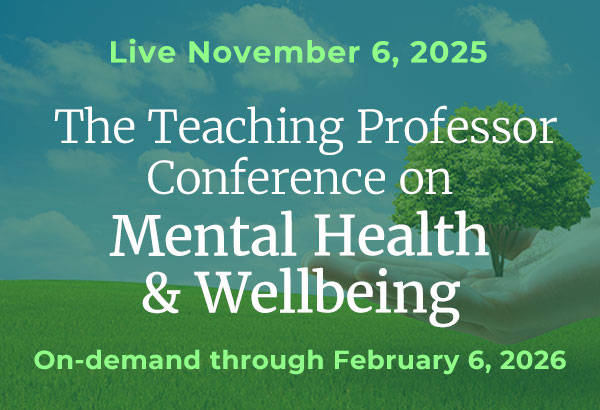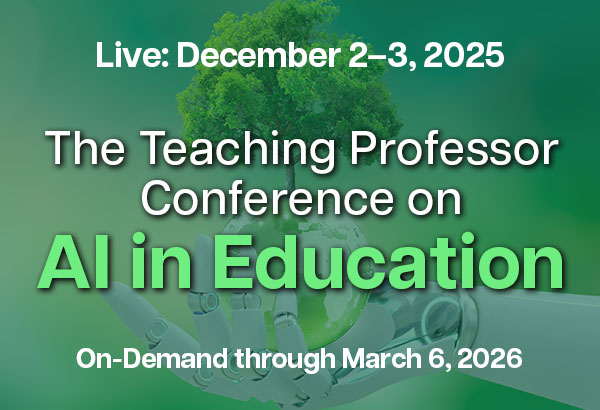Earlier in my teaching career, my first-day-of-class deck included a slide about my professional and personal history to build trust and transparency. I offered students a chance to ask about my education, experience in finance, the time I lived and studied in Paris, or how I ended up teaching at a community college. But a few years ago, I removed the slide. I had begun to worry it widened the gap between me and my students by highlighting differences rather than commonalities. Eventually, I brought it back. The separation, I realized, was an illusion. We were all there to learn, make mistakes, and create a trusting community.
That experience reflects a deeper evolution in how I understand the role of self in teaching and in relating to the world. A long-time meditator, I came across the provocative and subversive idea that the Western concept of a fixed and eternal self, the self that appears to experience its body and the world, is merely a temporary and contingent concept. While helpful for navigating a world full of other, similarly socialized egos, it may also strengthen misplaced feelings of separation from other people and the world. Almost immediately, I wondered how this theory from nondual mindfulness could be applied to my teaching practice.
Teaching With a Self
Teaching with a self is the default in Western societies and models of education. It begins with the assumption that there is a stable entity behind the eyes, which is separate from the body and the world, the internal decision-maker managing preferences, risks, and reputational concerns. In this mode, the professor’s authority, preferences, expertise, and goals (“learning outcomes”), even body, take center stage. It is natural to view students as a means to ends such as low DFW rates, good student evaluations, tenure, or a paycheck.
This perspective is not inherently bad. It can be constructive, motivating, and well-meaning in certain contexts. But it often comes with attachment to rigid outcomes: a concern for being respected, for avoiding discomfort, and for maintaining control. Grades, policies, and standards are employed as tools not just for learning but for controlling behavior and projecting authority.
These habits of mind can create emotional volatility and negative outcomes. When things do not go as planned—when students disengage, miss deadlines, or challenge norms and authority—it is natural to take it personally. Research on ego threat shows that when our sense of identity is tied to a role, criticism or noncompliance can feel like an assault. The result? Stress, frustration, and a diminished capacity to connect with and engage students.
We have all noted, especially since the pandemic, how students enter a classroom and choose seats as far from another human as possible, diving into their smartphones. If learning benefits from risk-taking, trust, and social connection, educators coming from an egoistic perspective may ironically make the achievement of the learning outcomes more difficult, not to mention joyless, as interpersonal connections become less natural. At the same time, focusing on the self can be as distracting from our task and audience as the self-view in a Zoom call or in-person class and impose an unnecessary cognitive load.
Teaching Without a Self
Teaching without a self begins with a simple but radical perspective from nondual traditions: that all thoughts, sensations, and identities arise in the same field of awareness. The concept of a separate self is just another thought—no more solid, special, objective, or permanent than any other. This is a core principle of nondual mindfulness, which emphasizes that the self is not a fixed entity but rather a moment-to-moment cognitive construction conditioned by the world. Indeed, this aligns with a growth mindset, in which learning and development occur through effort, changing strategies, and appropriate help-seeking.
Taking this perspective, effective teaching is a generative, social process. Without the constant need to defend or assert one’s ego (our preferences and aversions), the instructor’s attention can open to what is happening in the room or on the screen. Students become not coerced performers of outcomes, but a voluntary community, engaged with the instructor in shared learning. Goals are still present, but they are held more lightly. The emphasis moves from demanding certain outcomes to supporting shared intentions. We become less distracted and more present when we turn off Zoom’s self-view and quiet our built-in self-view.
Further, when we relax the assumption that we are all separate selves, it becomes clearer that all participants’ behaviors are embedded in and conditioned by society and the environment. This realization can reduce reactions of blame and foster a more objective and accurate understanding of classroom dynamics. It also aligns with the ethical stance of treating students as ends in themselves, not as means to personal or institutional goals.
Relaxing our commitment to a separate self reflects what behavioral science tells us about effort. According to Aldous Huxley’s law of reversed effort and ironic process theory, excessive effort to control thoughts, feelings, or outcomes can backfire, making some goals harder to achieve. Such ironic effects are most likely to occur when we are stressed, under cognitive load, time pressure, or trying to suppress specific behaviors and thoughts. In the classroom, this might mean that the more we try to avoid “failure” or enforce rigid learning outcomes and preferred behaviors, the more we may create resistance or disengagement.
Compassion naturally arises among both students and educators in this context. When we are less controlled by our own egos and narratives, we can listen more fully, respond more flexibly, and recover more quickly from inevitable challenges. This approach aligns with self-determination theory, which highlights autonomy, relatedness, and competence as key drivers of motivation. A classroom grounded in presence and care is one where these needs are met for both students and teachers. Indeed, research in contemplative pedagogy suggests that mindful presence can foster keener attention, active listening, moral sensibility, connection, creativity, and even “transformation” in the classroom.
Teaching as Care
Of course, we teach in bureaucratic institutions embedded in a capitalist economy. The self is not something we can—or should—discard entirely. It plays an important role in professional life, and in productively engaging in the economy and society. But that does not mean we must teach from the self.
In practice, teaching with and without a self is not contradictory. They can be integrated. The self can serve a practical role in our professional lives while receding into the background during the act of teaching itself. Teaching is fundamentally an expression of connection and compassion, both for students and educators. At its best, teaching supports joy and reduces suffering: uncontroversial moral imperatives, and core aspects of mindfulness without a self.
Here is one experiment you can try on your next Zoom call: turn off the self-view. In-person, when your personal, egoistic preferences are aroused, try accepting this without judgment and return to the people you are with. Then, reflect on how much that self-view distracts from everyone’s needs at that moment. One need not buy into the no-self theory to experiment with the idea as if it were true.
By loosening our identification with the self while honoring its value in the right contexts, we lighten the cognitive load and become more emotionally resilient, more adaptable, and more connected. We can meet students where they are, without defensiveness or ego. We can join them in setting and meeting more compassionate and realistic expectations.
The article represents my opinions only, not necessarily those of the Borough of Manhattan Community College or CUNY.
Brett Whysel is a lecturer in finance and decision-making at the Borough of Manhattan Community College, CUNY, where he integrates mindfulness, behavioral science, generative AI, and career readiness into his teaching. He has written for Faculty Focus, Forbes, and The Decision Lab. He is also the co-founder of Decision Fish LLC, where he develops tools to support financial wellness and housing counselors. He regularly presents on mindfulness and metacognition in the classroom and is the author of the Effortless Mindfulness Toolkit, an open resource for educators published on CUNY Academic Works. Prior to teaching, he spent nearly 30 years in investment banking. He holds an M.A. in Philosophy from Columbia University and a B.S. in Managerial Economics and French from Carnegie Mellon University.
References
Dunne, J. D. (2011). Toward an understanding of nondual mindfulness. *Contemporary Buddhism, 12*(1), 71–88. https://doi.org/10.1080/14639947.2011.564820
Koch, A. K., & Drake, T. A. (2017). The efficacy of a 15-to-Finish initiative in increasing student success. *Journal of Student Success, 8*(2), 29–39. https://files.eric.ed.gov/fulltext/EJ1154312.pdf
Brookfield, S. D. (2002). Teaching through discussion as the exercise of disciplinary power. In D. Lieberman & C. Wehlburg (Eds.), *To Improve the Academy* (Vol. 20, pp. 260–273). University of Michigan Press. https://doi.org/10.3998/tia.17063888.0020.019
Stucke, T. S., & Sporer, S. L. (2002). When a grandiose self-image is threatened: Narcissism and self-concept clarity as predictors of negative emotions and aggression following ego-threat. Journal of Personality, 70(4), 509–532. https://doi.org/10.1111/1467-6494.05015
American Psychological Association. (2023, August 29). Building student trust in the classroom. Psychology Teacher Network. https://www.apa.org/ed/precollege/psychology-teacher-network/introductory-psychology/student-trust
Abramova, O., Gladkaya, M., & Krasnova, H. (2024). The differential effects of self-view in virtual meetings when speaking vs. listening. European Journal of Information Systems, 34(2), 230–248. https://doi.org/10.1080/0960085X.2024.2325350
Harris, S. (2014). *Waking up: A guide to spirituality without religion*. Simon & Schuster.
Dweck, C. (2016, January). What having a “growth mindset” actually means. *Harvard Business Review*. https://hbr.org/2016/01/what-having-a-growth-mindset-actually-means
Garfield, J. L. (2022). Losing ourselves: Learning to live without a self. Princeton University Press.
Kant, I. (1785/1993). *Grounding for the Metaphysics of Morals* (J. W. Ellington, Trans.). Hackett Publishing. (Original work published 1785)
Huxley, A. (1932/2022). The law of reversed effort. In *Collected Essays* (Ed.). Big Think. https://bigthink.com/neuropsych/law-reversed-effort/
Wegner, D. M. (1994). Ironic processes of mental control. Psychological Review, 101(1), 34–52. https://doi.org/10.1037/0033-295X.101.1.34
Wegner, D. M. (1994). Ironic processes of mental control. *Psychological Review, 101*(1), 34–52. https://doi.org/10.1037/0033-295X.101.1.34
Ryan, R. M., & Deci, E. L. (2000). Self-determination theory and the facilitation of intrinsic motivation, social development, and well-being. *American Psychologist, 55*(1), 68–78. https://doi.org/10.1037/0003-066X.55.1.68
Barbezat, D. P., & Bush, M. (2014). *Contemplative practices in higher education: Powerful methods to transform teaching and learning*. Jossey-Bass. https://psycnet.apa.org/record/2014-06440-000
Zoom Support. (n.d.). How to turn off self-view in Zoom.
https://support.zoom.com/hc/en/article?id=zm_kb&sysparm_article=KB0068249






